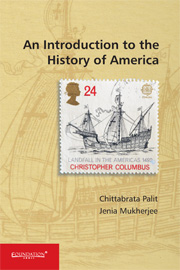Book contents
- Frontmatter
- Contents
- Preface
- Timeline of Events
- 1 An Early History: From Settlement to Colonization
- 2 The American War of Independence
- 3 The Formative Period: The Era of Solidarity and Expansion
- 4 ‘Two Americas’: Regional Differences and Sectional Conflicts
- 5 Agrarian and Industrial Revolutions
- 6 Resisting Voices
- 7 American Foreign Policy: Post-Monroe Doctrine to World War I
- 8 The Great Crisis and Its Recovery
- 9 The Rise of America: WWII and After
- 10 The Quest for Equality
- 11 American Environmentalism and Environmental History
- Epilogue: Perceiving American History Beyond the ‘Exceptionalist’ Framework
- Index
7 - American Foreign Policy: Post-Monroe Doctrine to World War I
Published online by Cambridge University Press: 05 April 2014
- Frontmatter
- Contents
- Preface
- Timeline of Events
- 1 An Early History: From Settlement to Colonization
- 2 The American War of Independence
- 3 The Formative Period: The Era of Solidarity and Expansion
- 4 ‘Two Americas’: Regional Differences and Sectional Conflicts
- 5 Agrarian and Industrial Revolutions
- 6 Resisting Voices
- 7 American Foreign Policy: Post-Monroe Doctrine to World War I
- 8 The Great Crisis and Its Recovery
- 9 The Rise of America: WWII and After
- 10 The Quest for Equality
- 11 American Environmentalism and Environmental History
- Epilogue: Perceiving American History Beyond the ‘Exceptionalist’ Framework
- Index
Summary
It sheds light on how the American foreign policy gradually shifted from ‘Splendid Isolation’ to ‘Manifest Destiny’ to suit the politico-economic realities of the time. With the success of the Monroe Doctrine in the domestic front, it began to look outward with imperialist aspirations. Gradually, the Monroe Doctrine re-evolved to define a recognized sphere of American control in several countries including Cuba, Venezuela, Mexico, Nicaragua, Panama, etc. Along with the political history of annexation and conquest, the chapter explores US strategies and tactics to legitimize political control. The second part is on the US involvement in the WWI and how and why the policy of ‘armed neutrality’ was replaced by opposition against Triple Alliance.
a. From ‘Splendid Isolation’ to ‘Manifest Destiny’
The Monroe Doctrine which had essentially been a doctrine for isolation underwent a gradual transformation, its principle and ideology being re-interpreted and applied to pave the way towards ‘Manifest Destiny’ especially since the fag end of the nineteenth century, though the process already initiated few decades before that. It is worth mentioning here that American Foreign Policy was the indispensable midwife to the birth of the American Republic.
- Type
- Chapter
- Information
- An Introduction to the History of America , pp. 167 - 178Publisher: Foundation BooksPrint publication year: 2014

